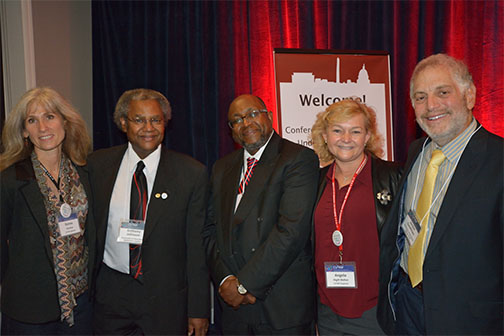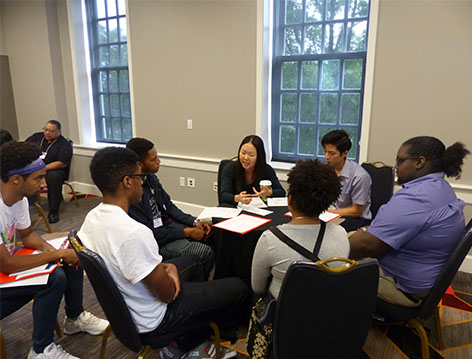Inaugural Plasma Award Announced
- Details
- Category: Department News
- Published: Tuesday, November 08 2016 21:28
The inaugural Ronald C. Davidson Award for Plasma Physics (2016) was presented to Gregory Howes of the University of Iowa for research done in conjunction with UMD's Professor William Dorland of Physics and IREAP and Jason TenBarge, an Assistant Research Scientist in IREAP. The Davidson award recognizes the research described by the most notable paper published in AIP's Physics of Plasmas over the last five years. It will be presented annually at the APS Division of Plasma Physics meeting, and carries a cash prize of $5,000 for the first author.
This new prize honors Ron Davidson, a member of the University of Maryland Department of Physics from 1968-78. Prof. Davidson moved from Maryland to MIT and then to Princeton University, where he served as Professor, as Director of the national laboratory for plasma physics research from 1991-96, and as editor of the journal Physics of Plasmas. Davidson himself authored more than 500 papers, many of which were seminal, covering a wide range of plasma physics phenomena. He won the James Clerk Maxwell Prize in Plasma Physics in 2008, and is one of five current and former University of Maryland faculty to be so honored.
Howes, TenBarge and Dorland's paper, entitled "A weakened cascade model for turbulence in astrophysical plasmas", Phys. Plasmas, 18. 102305 (2011), presented the first high-resolution, kinetic simulations of turbulence in the solar wind together with a theoretical framework for interpreting and generalizing the predicted fluctuation spectra to a wide range of physical conditions. This research project represents an "export" of theoretical and computational tools from the international magnetic confinement fusion research program to non-laboratory, natural settings. For magnetic confinement fusion research to pay off, it is essential to control plasma turbulence (among other problems), and the University of Maryland has long been a leading institution in the theory and simulation of plasma turbulence. The collaboration between UMD and the University of Iowa grew out of a national, five-year Department of Energy Fusion Science Center (2006-2011), led by Dorland and Prof. Steven Cowley (FRS), now at the University of Oxford. A central goal of the Fusion Science Center was to identify and nurture broader applications of fusion-inspired theory.

